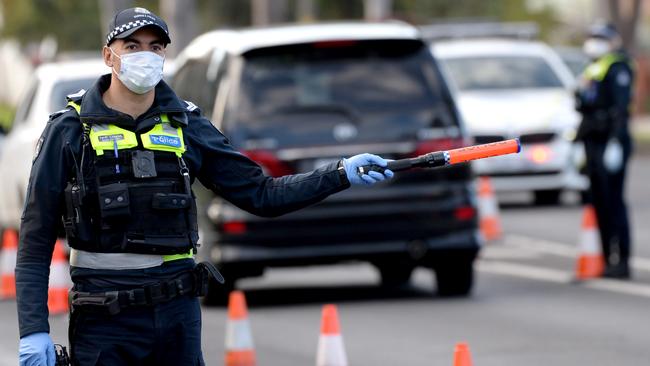How hi-tech goggles may soon detect driver fatigue
A pair of goggles dubbed a breathalyser for the eyes could soon be used by Victorian traffic police to randomly test drivers for signs of fatigue.
Police & Courts
Don't miss out on the headlines from Police & Courts. Followed categories will be added to My News.
Drivers at roadside breath test sites could soon be checked by police for fatigue with Victorian researchers developing a pair of goggles that can measure eye movement.
The scientists behind the discovery say the device could become a new weapon in Victoria’s effort to bring down the road toll.
A group of researchers which includes experts from the CSIRO and Austin Health have developed a prototype pair of goggles that detect signs of tiredness and is mobile enough to be used by traffic police.
The organisation is known as the Australian Cooperative Research Centre for Alertness, Safety and Productivity.
The device, dubbed a breathalyser for your eyes, measures the speed of eye movements to look for signs of fatigue.
Associate Professor Mark Howard, from the Institute for Breathing and Sleep at Austin Health, said the technology could mirror the rollout of the random breath test.
He said alcohol testing was initially use to reduce workplace accidents before widening out to the broader community.

“We want the same to happen with awareness of fatigue as a factor in road accidents,” Assoc Prof Howard said.
“Fatigue contributes to approximately 20 per cent of crashes.
“Victoria has been a road safety leader for years and its showing a similar leadership and appetite to try and detect fatigue at the roadside.”
Assoc Prof Howard said the technology had first been developed by examining the difference between motorists who had a normal sleep and those that had been awake for 36 hours.
“We looked at them during their drive, sometimes at a time when they were drifting off the road,” he said.
“Our tests also examined eyelid and eye movement before and after each drive.
“When you’re fatigued the activity in the brain slows down and that extends to the continuous involuntary movements muscles around your eyes.”
Researchers are working with state and federal governments to develop the technology and work out how it could be regulated, with more testing needed to find subtle differences between tired drivers.
Assoc Prof Howard said the next step was to develop a larger build of goggles by looking at people with a high risk of fatigue.
“We want to move into doing that in a larger scale with healthcare workers,” he said.
“If we can use this research to establish a robust roadside testing device for fatigue and tiredness then not only will it build community awareness of the issue but will also help to save lives.”
MORE NEWS
POLICE RAMP UP PATROLS AS DAN DLAMS BEACHGOERS
STATS THAT PROVE MCG COULD’VE HOSTED GRAND FINAL
